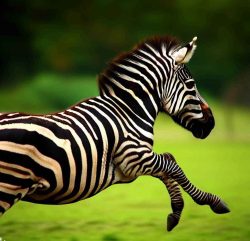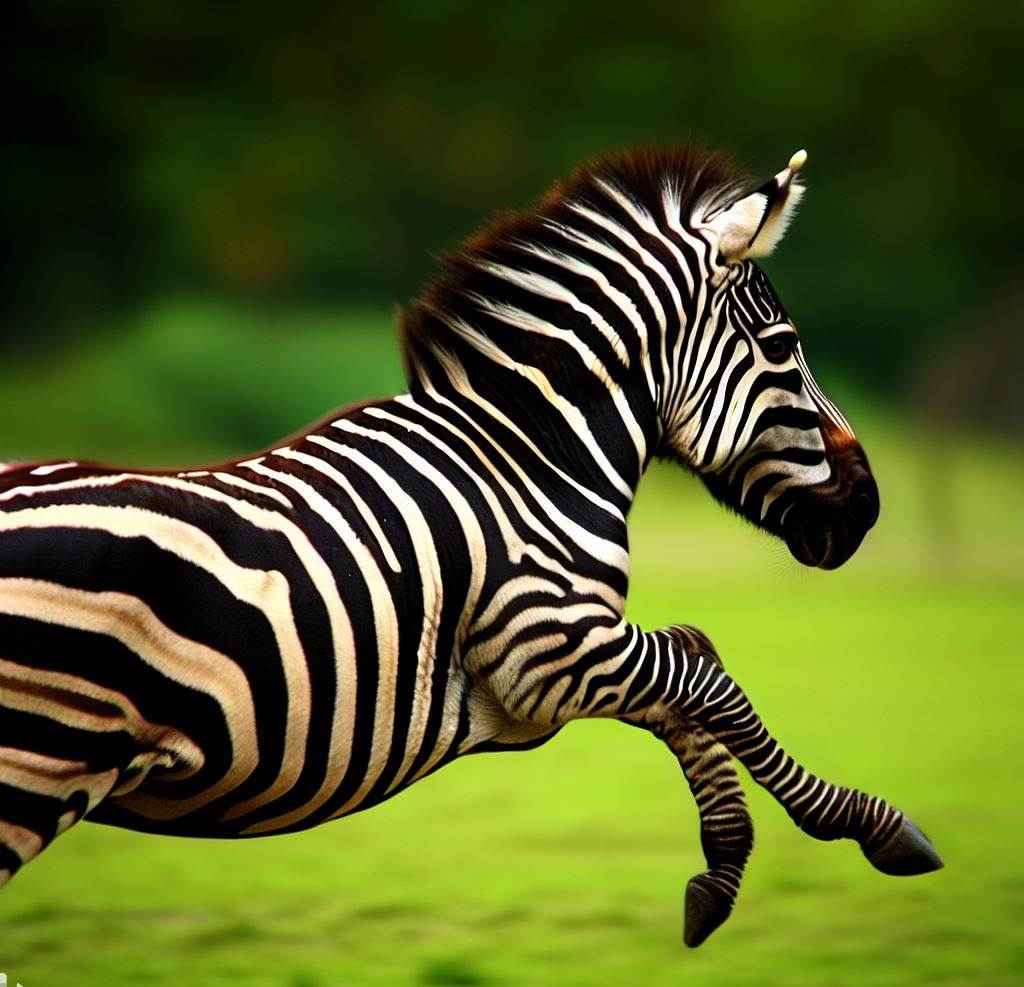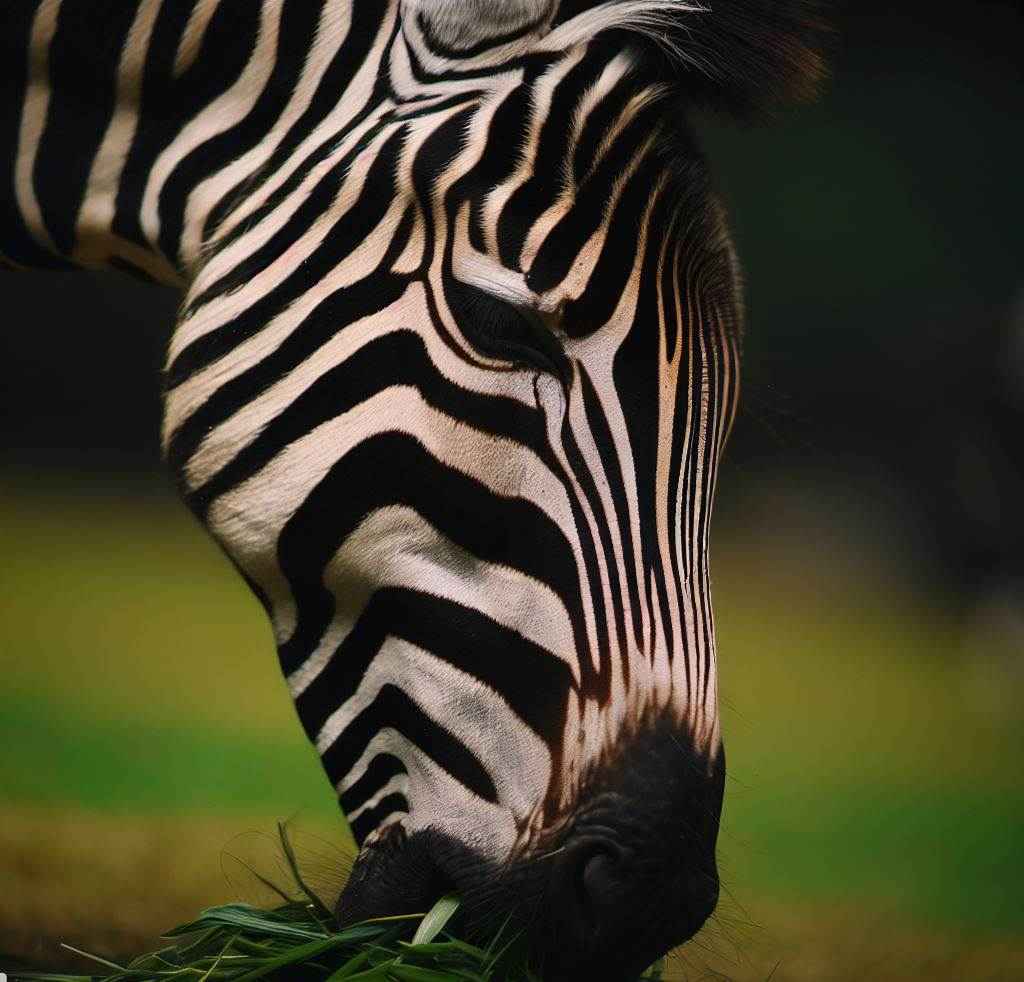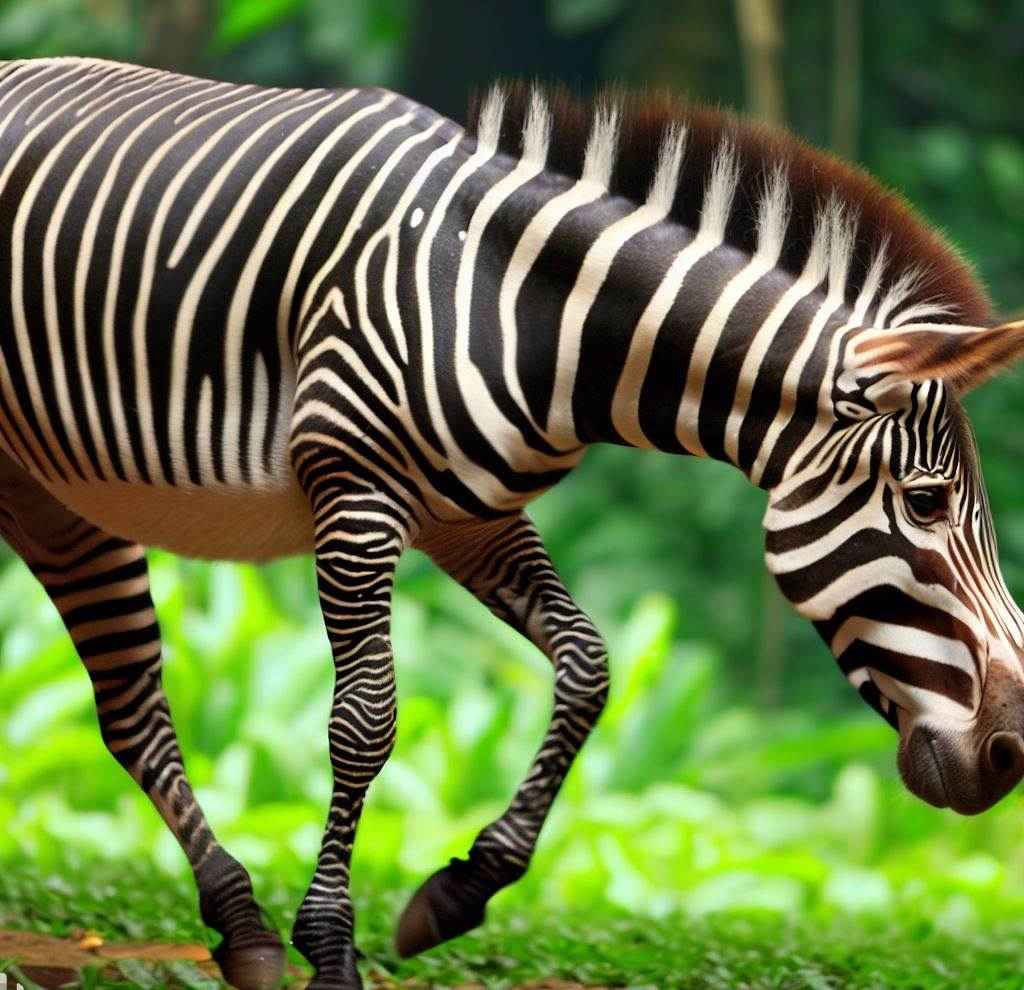Introduction:
The question is Adaptations of zebras The zebras are a fascinating species of the animal kingdom which possess an array of remarkable adaptations according to environment that enable them to survive in their diverse habitats. From their distinct black and white striped coats lines to their keen senses, zebras have evolved unique strategies to protect themselves and ensure their survival. In this contest, we will explore the adaptations of zebras and shed light on what makes them such exceptional animals.
Adaptations Of Zebras In Grassland Ecosystem:
Zebras are the remarkable creatures of the grassland ecosystems that have evolved a range of adaptations in ecosystem that equip them to live in their unique surroundings. One of their most attractive features is their black and white striped coat which serves as a natural form of camouflage.
These bold patterns help the zebras to miss with seamlessly into the tall grasses for making it challenging for predators to single them out. This adoptative trait provides the zebras with a distinct advantage by enhancing their chances of survival in the grasslands ecosystem. Furthermore the zebras possess exceptional eyesight by allowing them to spot potential threats from a distance.
Their keen vision enables them to remain vigilant and respond swiftly to danger. Furthermore, zebras showcase remarkable speed and agility which enables them to outpace predators and navigate the dynamic landscape with ease.
Through these remarkable adaptations of zebras have become perfectly suited to survive in the dynamic and awe-inspiring grassland ecosystems. They discover more about the fascinating adaptations of zebras in the grassland ecosystem at Adaptations Of Zebras.
What Physical & Behavioral Adaptations Do Zebras Have That Help Them?
Zebras showcase a range of physical and behavioral adaptations tailored to their environment. Their most striking feature, the black and white stripes that serves as both camouflage and a social bonding mechanism. This disruptive coloration confuses predators and biting insects, while also making it challenging for predators to target an individual zebra within a herd. Zebras also possess keen senses, including exceptional vision and acute hearing, allowing them to detect danger early.
Behaviorally, zebras rely on their strong social structure as a survival strategy. Living in herds, they can collectively spot predators and respond quickly to threats. Their habit of mutually grooming each other not only reinforces social bonds but also helps in removing pests from their coats. Zebras’ remarkable combination of physical traits and communal behaviors exemplifies their remarkable adaptation to the grassland ecosystem.
How Do Zebras Survive In The Grasslands?
Zebras’ survival in grasslands hinges on their remarkable adaptations. Their distinctive black and white stripes serve as a form of camouflage called “disruptive coloration” which confuses predators like lions by making it difficult to single out an individual zebra from the herd. This deters attacks and increases their chances of escape. Zebras also possess strong social structures that lead to collective vigilance against threats. Their excellent hearing and vision help them detect predators even from a distance.
Additionally, zebras are well-equipped for grazing on the grasses that make up their primary diet, allowing them to exploit the abundance of this food source in grassland ecosystems. Overall the combination of camouflage, social cooperation, keen senses, and specialized feeding habits enhances zebras’ chances of survival amidst the challenges of the grasslands.
Also Read:
Other Physical Adaptations Of Zebra:
Striking Coat:
The one of the most recognizable features of zebras are their black and white striped coat lines. These distinctive pattern serves as a natural camouflage by making it difficult for the predators such as the lions and hyenas to single out a single zebras in a herd. The stripes also help to protect from biting insects like horseflies which are are repelled by the contrasting colors of it.
Group Living:
The zebras are the highly social animals and they often live in the large herds. This group living behavior provides them to several advantages. When threatened the zebras form a tight-knit group by making it harder for predators to target a single individual. By staying together the zebras also get the benefit from increased vigilance and early predator detection, enhancing their chances of survival.
Speed and Agility:
They acquires the special speed and motility which allows them to run away from predators. The long legs of the zebras and their muscular bodies make them to reach speeds of about 40 miles per hour (64 kilometers per hour). This adaptations of zebras help them to escape smoothly from the predators and also helps to increasing the more chances of their survival in forest.
Keen Eyesight:
Zebras have excellent vison which plays a crucial role in their survival. Their eyes are kepted on the sides of their heads which also provides them with a narrow field of eyesight. This adaptation also allows zebras to spot predators from a distance and react accordingly to surrounding, whether it’s fleeing or joining with other group members for the protection of zebras.
Diet Of Zebras:
Zebras are the herbivores species that have a herbivorous diet which mainly consisting of the grass and vegetation. They are the selective grazers, favoring tender, nutrient-rich grasses. During times of less food the zebras may also feed on leaves, shoots, and the bark from trees and shrubs. The zebras are the specialized digestive system by including the cecum which allows them to extract maximum nutrients from plant material to get nutrients.
Habitat Of Zebras:
The zebra are present across a wide range of habitats in the region of Africa including the grasslands, savannas, woodlands, and mountainous regions, highlighting their adaptability to ecosystem. They had include the specific traits that enables them to lives in each environment they inhabit.
Grasslands are preferred by zebras due to the abundant grasses available for grazing and the open spaces that facilitate visibility and social interactions. Woodlands offer zebras shelter, shade, and a diverse array of browse plants, providing them with a varied food source. From the iconic Serengeti plains to the challenging Kalahari Desert, zebras have successfully established themselves in various habitats, displaying their remarkable adaptability and resilience.
Facts & Features Of Zebras:
Zebras, with their distinctive black and white striped coats, are truly remarkable creatures. Here are some fascinating facts and features about zebras:
1. Striking Stripes:
Zebras possess unique patterns of black and white stripes that vary among individuals. No two zebras have identical stripes, making each zebra’s coat as unique as a fingerprint. These stripes serve multiple purposes, including camouflage, social recognition, and protection against biting insects.
2. Social Animals:
Zebras are the highly social animals. They also lived in the herds consisting of several individuals. These herds of ten contain a dominant male called a stallion and multiple females are known as the mares along with their offspring. By living in the groups offers zebras for protection against predators as they can alert each other to potential dangers and collaborate in defense.
3. Vocal Communication:
Zebras communicate by using a range of vocalizations, including braying, snorting, and barking are special features. These vocal signals help them to maintain the social bonds among them and coordinate movements within the herd and warn others of approaching threats.
4. Adaptability:
Zebras have also shown the remarkable adaptability according to the different environments and can also be found in a variety of habitats across the region of Africa in including grasslands, savannas, woodlands, and even the mountains. Their ability to lived in the diverse ecosystems showing their resilience and resourcefulness.
5. Herbivorous Diet:
Zebras are herbivores, feeding primarily on grass and other vegetation. They have specialized teeth and a complex digestive system that allows them to efficiently process and extract nutrients from tough plant material.
6. Strong Kick:
Zebras are known for their powerful kicks, which they use as a defense mechanism against predators. With their strong legs, they can deliver forceful kicks capable of fending off attackers such as lions or hyenas.
7. Migration:
Some zebra populations undertake impressive seasonal migrations in search of food and water. These migrations can cover long distances, with zebras moving in large herds to access greener pastures and freshwater sources.
8. Endangered Species:
They are the widespread across the Africa like some species such as the Grevy’s zebra that are are classified as endangered due to habitat loss and poaching. Conservation efforts are crucial to protect and preserve these magnificent animals.
Zebras are not only visually captivating but they are also possess intriguing characteristics and adaptations that contribute to their survival and success in the grassland ecosystem. By studying and appreciating these facts and features of zebras allows us to gain a deeper understanding of the marvels of the animal kingdom.
How Do Zebras Survive & Protect Itself?
Zebras prioritize survival and protection in their natural habitats, employing various strategies to increase their chances of staying safe. Their strong social structure allows them to rely on collective vigilance and group defense against predators. The zebras’ black and white striped coats act as natural camouflage in grasslands, making it challenging for predators to spot them.
Their remarkable speed, agility, and strong kicks help them evade and fend off attackers when confronted with danger. These adaptations, along with their innate instincts and cohesive herds, make zebras resilient and formidable animals in diverse environments.
Where Do Zebras Migrate To?
Zebras are not typically known for long-distance migrations like some other African mammals. Instead, their movements are often dictated by seasonal changes in search of food and water. In regions with a distinct wet and dry season, zebras might undertake localized migrations to follow the availability of fresh grazing lands and water sources.
These movements can be short-term and may involve traveling between different parts of their home range. They do not start large-scale cross-continental migrations like wildebeests or certain antelope species. Zebras’ survival strategy is more centered around their adaptations for grazing and their ability to thrive in their specific grassland habitats.
FAQs:
1 How do zebras adapt to survive?
Zebras adaptation to survive through their strong social structure and collective defense mechanisms, along with their black and white striped coat that provides camouflage and their remarkable speed and agility to evade predators.
2 What type of adaptation are zebra stripes?
Zebra stripes are a type of adaptation known as camouflage, helping zebras blend into their grassland environment and making it challenging for predators to single them out.
3 Do zebras have special features?
Yes, zebras have special features that contribute to their survival, including their black and white striped coat for camouflage and their remarkable speed and agility to evade predators.
4 What are 5 interesting facts about zebras?
Here are five fascinating facts about zebras:
1. Zebras boast one-of-a-kind striped coats, making each individual’s pattern unique.
2. They exhibit strong social bonds, living in herds and relying on group defense strategies.
3. The zebras can achieve an impressive speeds about 40 miles per hour (64 kilometers per hour) as a means to evade predators.
4. Their stripes not only captivate our eyes but also serve as a natural defense mechanism against bothersome biting insects.
5. Zebras possess a specialized digestive system, enabling them to effectively extract nutrients from tough plant material.
5 What is the special habitat of zebra?
Zebras are adaptable and can be found in a variety of habitats in Africa, including grasslands, savannas, woodlands, and even mountainous regions.Their ability to thrive in diverse environments showcases their resilience and versatility as a species.
6 How are zebras adapted to their environment?
Zebras have evolved distinct black and white stripes that function as camouflage for confusing predators in their grassland habitat. Their strong social bonds create a collective vigilance, enhancing survival against threats. Specialized grazing teeth and keen senses further aid their adaptation to the grassland environment.
7 Are mountain zebras endangered?
Yes, the IUCN Red List of Threatened Species classifies mountain zebras (Equus zebra) as near threatened. Due to habitat degradation, competition from cattle, and poaching, their populations have had difficulties. To lessen these dangers and guarantee their existence, conservation activities have been put in place.




